IN OTHER LANGUAGES
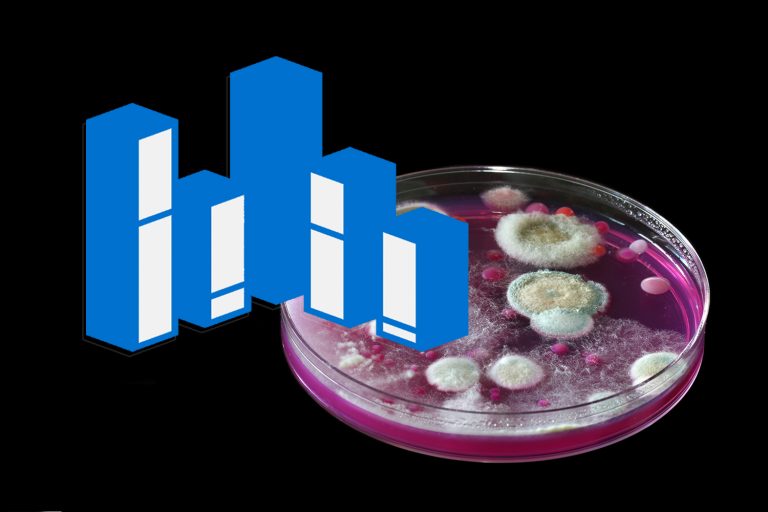
This report is a statistical summary of the more than 1000 analysis that we made in our laboratory of clinical services during 2018. Determinations of total aflatoxins (AFLA), vomitoxin (DON), fumonisins (FUM), T2-toxin (T2) and zearalenone (ZEN), and were carried out in samples of feedstuffs provided by our Chinese customers.
Looking at the general levels of contamination of all samples, only 0.5% of the samples were negative to mycotoxins; 2.1% of the samples were contaminated with only one mycotoxin and 97.3% of the samples were positive to two or more mycotoxins.
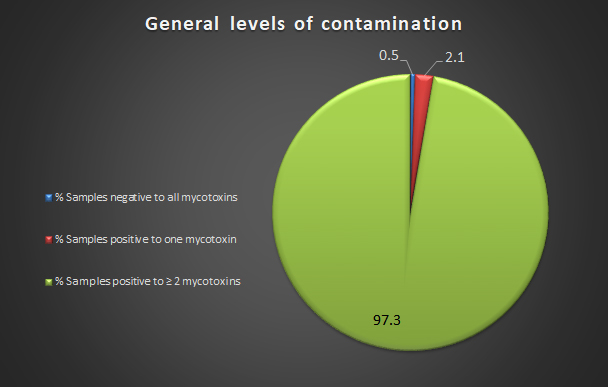
The most frequently found mycotoxin was deoxynivalenol (DON, vomitoxin): 97.3% of the samples were positive while almost 30% showed a contamination above the recommended safety limit.
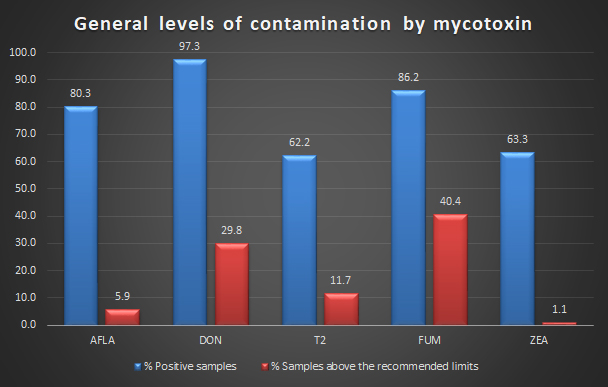
The second most common mycotoxin was fumonisin (86.2% of contaminated samples) with 40.4% of the feedstuffs above the advised limits. Aflatoxins were the third most found mycotoxins: 80.3% samples were positive but only 5.9% above the recommended limits for each specie.
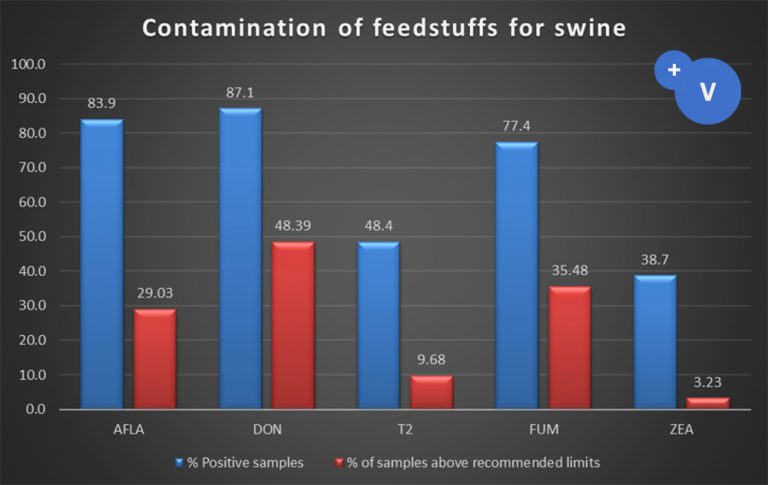

DON (vomitoxin, deoxynivalenol) was the most frequently found mycotoxin (87.1%) and 48.39% of the samples were above the recommended limits. As it is well-known, this toxin is related to impaired feed intake, decreased performance and alterations of gut health.
The contamination by aflatoxins was the second most important (83.9%) and 29.03% of the samples exceeded the safety limits. In pigs, the toxicity of aflatoxins is linked to poor growth and alterations of the immune system.
The occurrence of fumonisins was also high (present in 77.4% of the samples, 35.48% above the recommended limits).
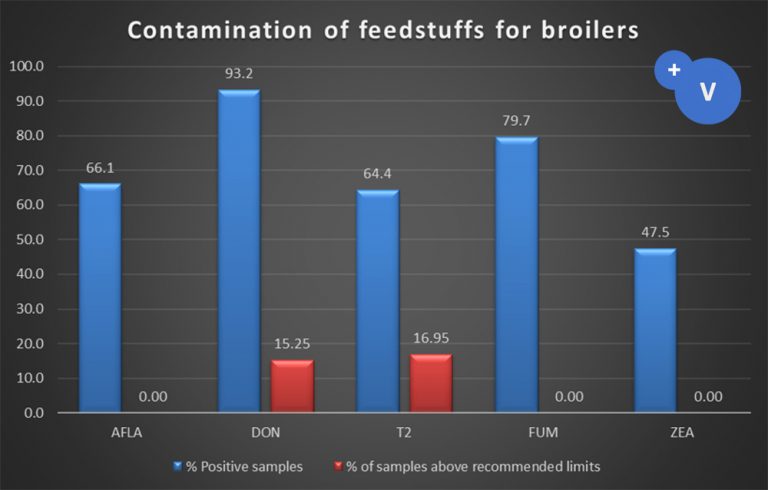

The most common mycotoxin in broiler feedstuffs was vomitoxin (93.2% of positive samples, 15.25% above the recommended limit). This mycotoxin is related to impaired feed intake, reduced growth and occurrence of digestive diseases.
The contamination by fumonisins was the second most important (79.7% of positive samples) but no sample exceeded safety limits.
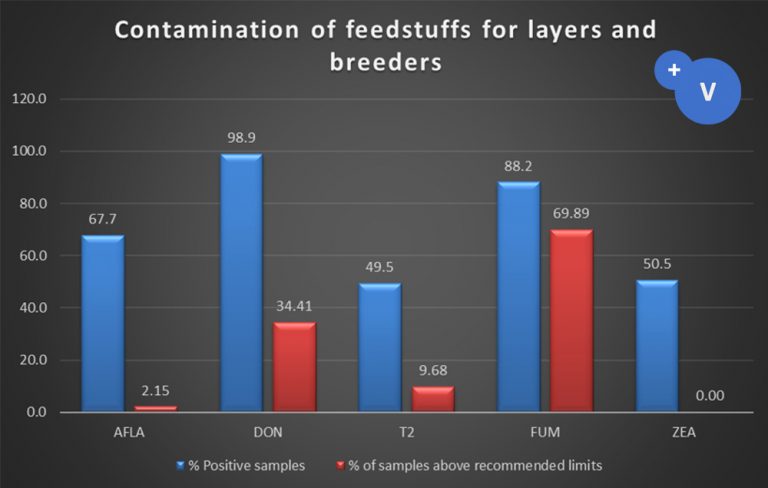

The most widespread mycotoxin in feedstuffs for layers and breeders was vomitoxin (98.9%, 34.41% above the recommended limit), which is related to decreased productivity, occurrence of egg defects and digestive diseases.
The contamination by fumonisins was the second most important (88.2%, 69.89% samples above the recommended limit). Fumonisins are related to poor feed conversion, deficient egg quality and impaired gut heath.
Feedstuffs for layers and breeders showed high contamination levels. Aflatoxins (67.7%), zearalenone (50.5%) and T2 toxin (49.5%) were present in approximately half of the samples.
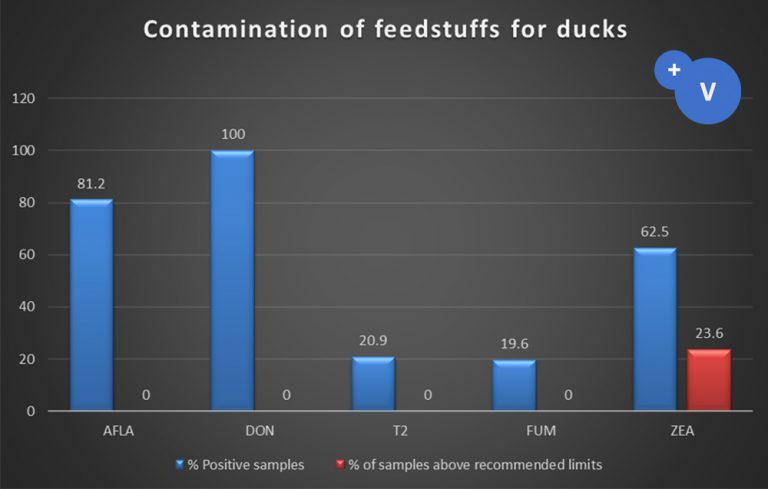

The most common mycotoxin in duck feedstuffs was vomitoxin, found in all the samples, although none exceeded the recommended limits. Aflatoxins (81.2%) and zearalenone (62.5%, with 23.6% of the samples above the limits) were also frequently found.
The results of this mycotoxin survey reiterate the importance of performing a mycotoxin determination of the feedstuffs prior to feeding them to the animals. We offer a professional analysis service that determinates the mycotoxin levels your feeds, raw materials or milk and helps to make a risk assessment.
We also want to underscore that, although there are a lot of mycotoxin binders in the market, PlusBind© and PlusBind Bio© show better adsorption rate for all mycotoxin than competitors, thanks to their strategic blends of highly active mycotoxin sequestering silicates.
Picture of the culture: Stockvault. Icon found here.

Certain health statements may not be applicable in your region.